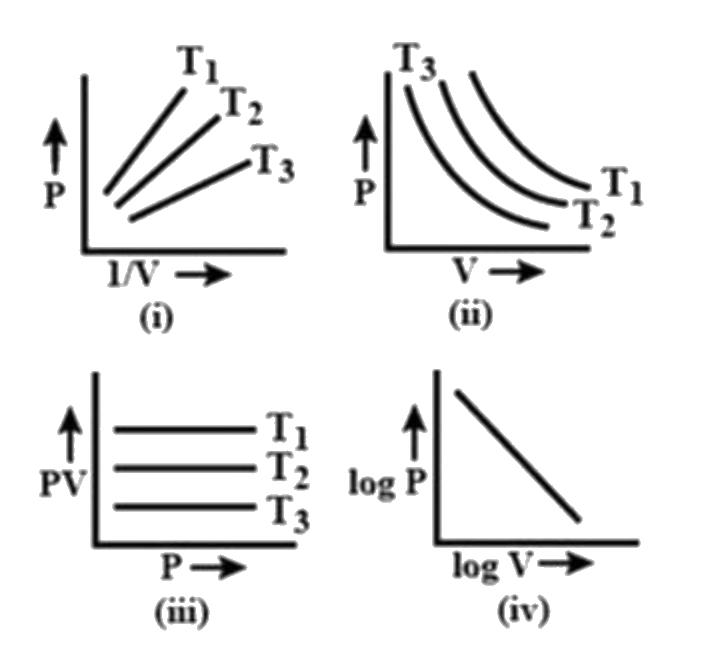Which of the following is/are true for Boyle's law?
[{dPdV}T=−KV]
[{dPdV}T=−KV2]
PV = Constant
Both (2) & (3)
To determine which statements are true for Boyle's law, we can follow these steps:
Step 1: Understand Boyle's Law
Boyle's Law states that at constant temperature, the pressure (P) of a gas is inversely proportional to its volume (V). This means that as the volume increases, the pressure decreases, and vice versa.
Step 2: Express Boyle's Law Mathematically
Mathematically, Boyle's Law can be expressed as:
P∝1V
or
PV=K
where K is a constant for a given amount of gas at a constant temperature.
Step 3: Analyze the Options
Now, let's analyze the options provided in the question. We need to check if they align with the expression derived from Boyle's Law.
1. Option 1: This option may state something incorrect about the relationship between P and V.
2. Option 2: This option likely states that P is inversely proportional to V, which is true.
3. Option 3: This option might state that the product PV is constant, which is also true.
4. Option 4: This option could be a combination of the previous options, confirming both statements.
Step 4: Conclusion
From the analysis:
- Option 2 is true (P is inversely proportional to V).
- Option 3 is true (PV = constant).
- Therefore, Option 4, which states that both 2 and 3 are correct, is also true.
Final Answer
The true statements for Boyle's law are options 2 and 3, which means option 4 is correct.
---
Boyle's Law states that at constant temperature, the pressure (P) of a gas is inversely proportional to its volume (V). This means that as the volume increases, the pressure decreases, and vice versa.
Mathematically, Boyle's Law can be expressed as:
P∝1V
or
PV=K
where K is a constant for a given amount of gas at a constant temperature.
Now, let's analyze the options provided in the question. We need to check if they align with the expression derived from Boyle's Law.
2. Option 2: This option likely states that P is inversely proportional to V, which is true.
3. Option 3: This option might state that the product PV is constant, which is also true.
4. Option 4: This option could be a combination of the previous options, confirming both statements.
From the analysis:
- Option 2 is true (P is inversely proportional to V).
- Option 3 is true (PV = constant).
- Therefore, Option 4, which states that both 2 and 3 are correct, is also true.
The true statements for Boyle's law are options 2 and 3, which means option 4 is correct.
Similar Questions
Knowledge Check
If P, V and T stand for pressure, volume and absolute temperature of a gas, which of the following will be true for Boyle's Law
AV∝T, when P is constantBV∝1P , when T is constantCPV=RTDPV=nRTWhich of the following is according to Boyle's law?
A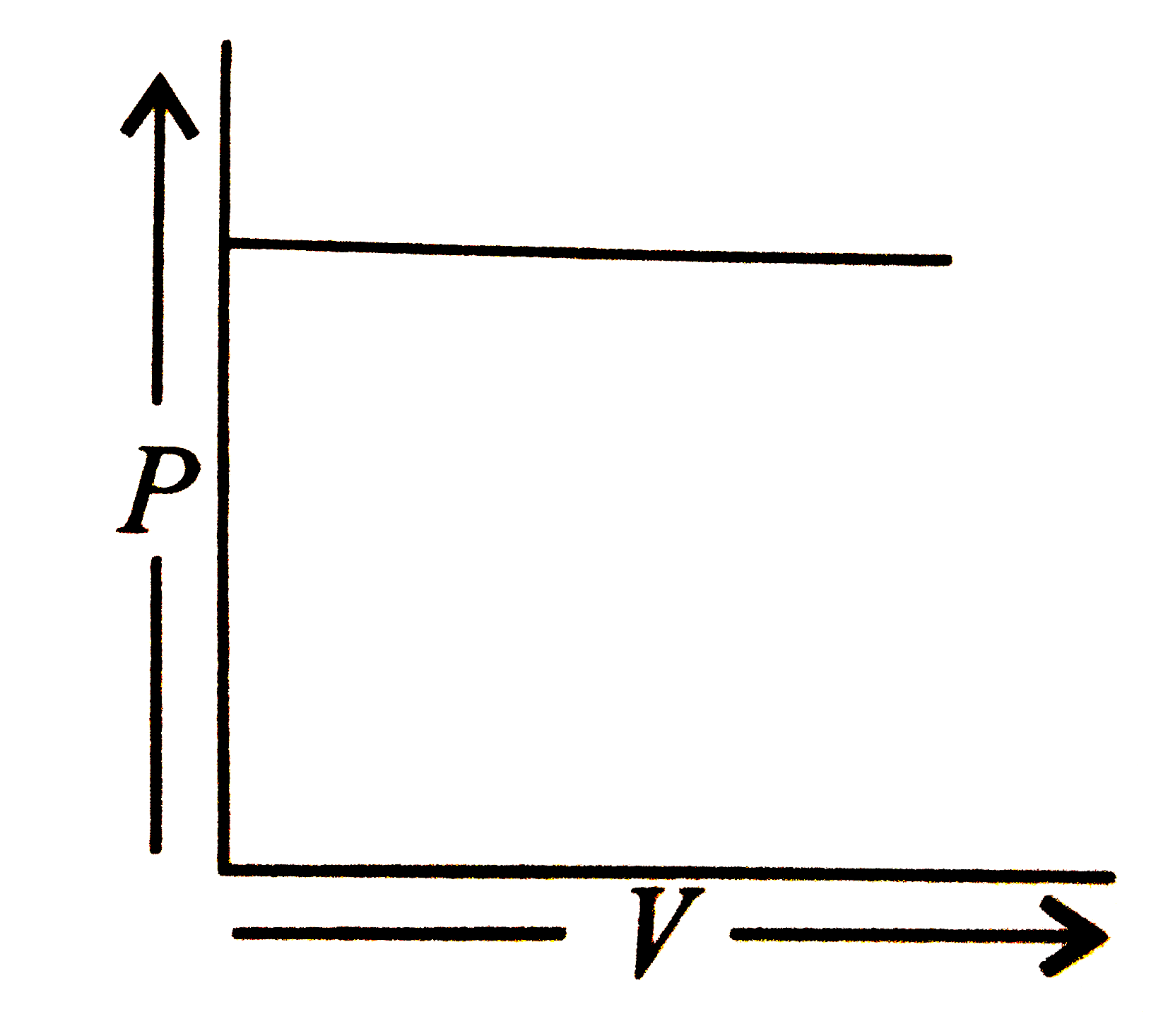 B
B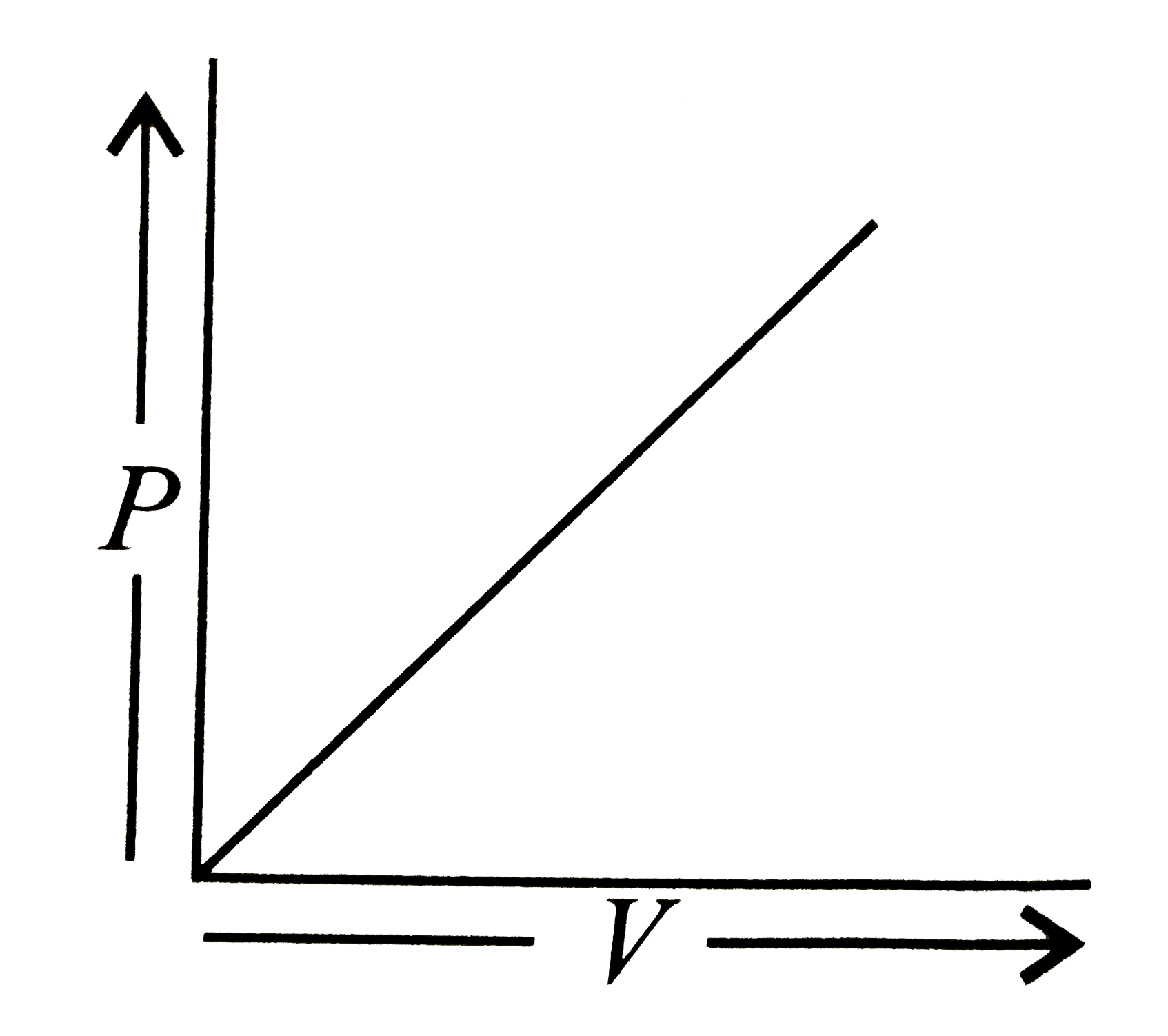 C
C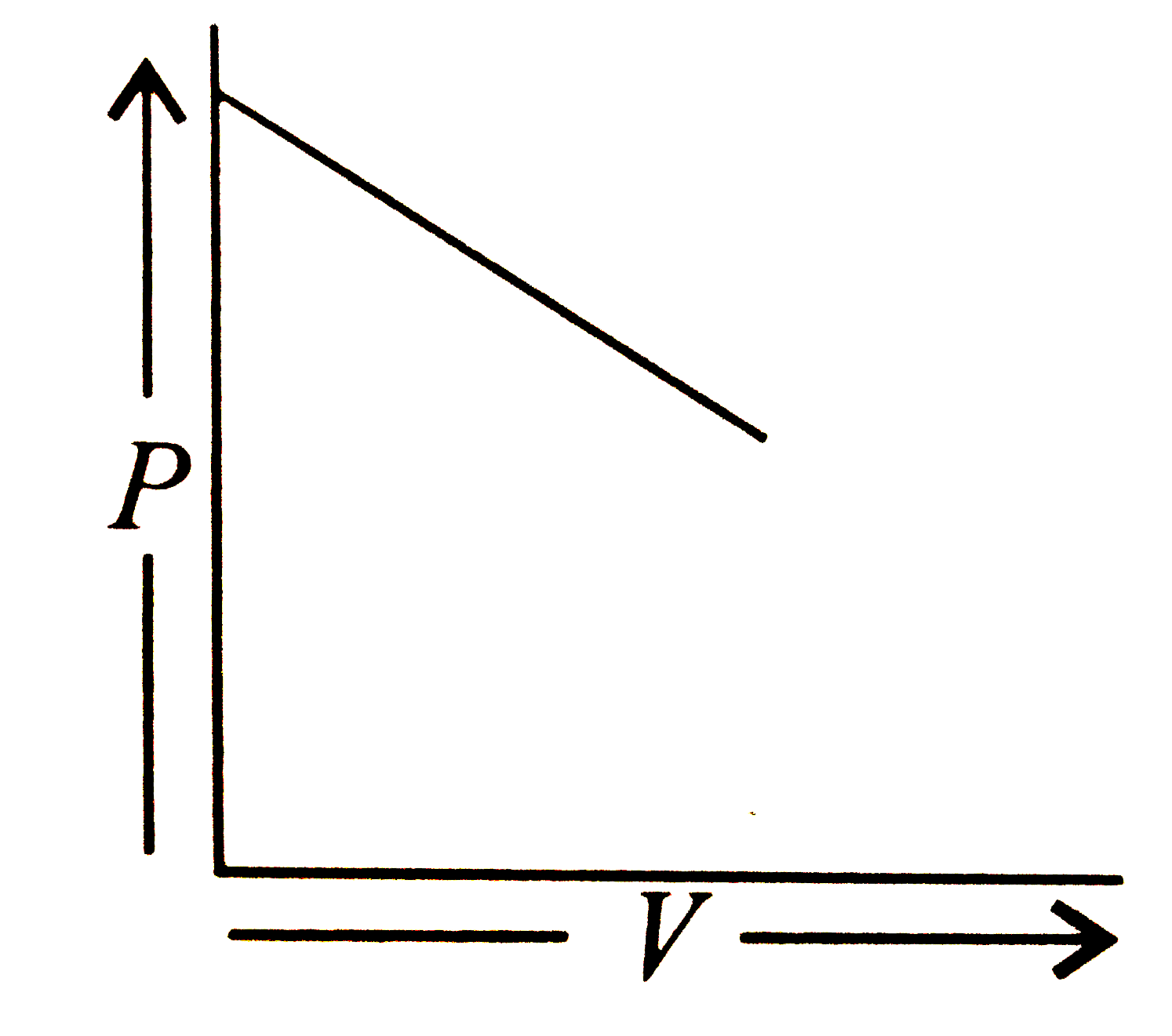 D
D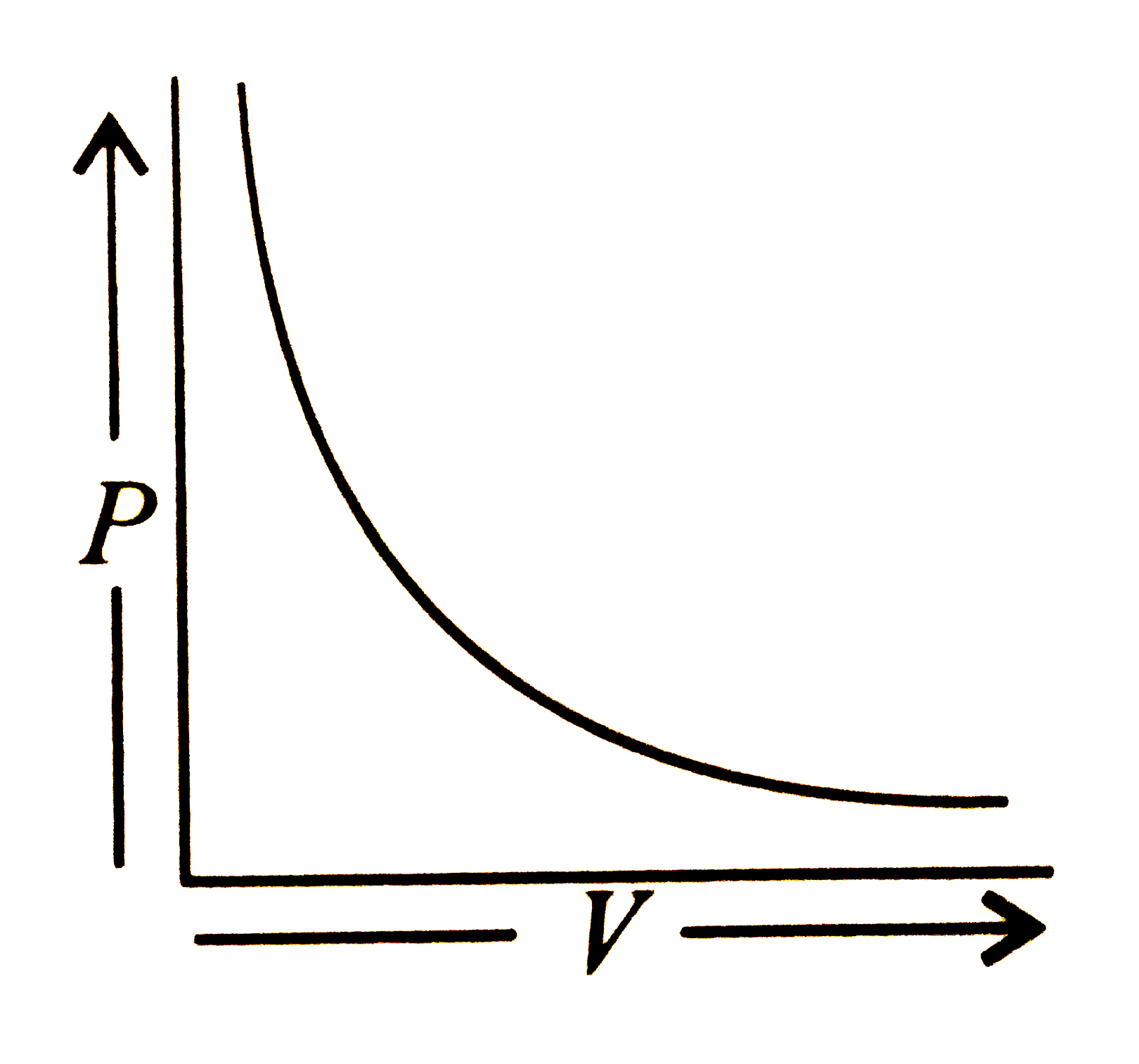
Which of the following is not correct for Boyle's Law at 27∘C ?
AP=380 mm Hg, V=100 mLBP=1 atm, V=0.05 LCP=1 atm, V=0.5 dm3DP=190 mm Hg, V=0.2 dm3
Which of the following graph represents Boyle's law ?
View SolutionWhich of the following is not according to Boyle's law?
View SolutionWhich of the following graphs represents Boyle's law correctly?
(i)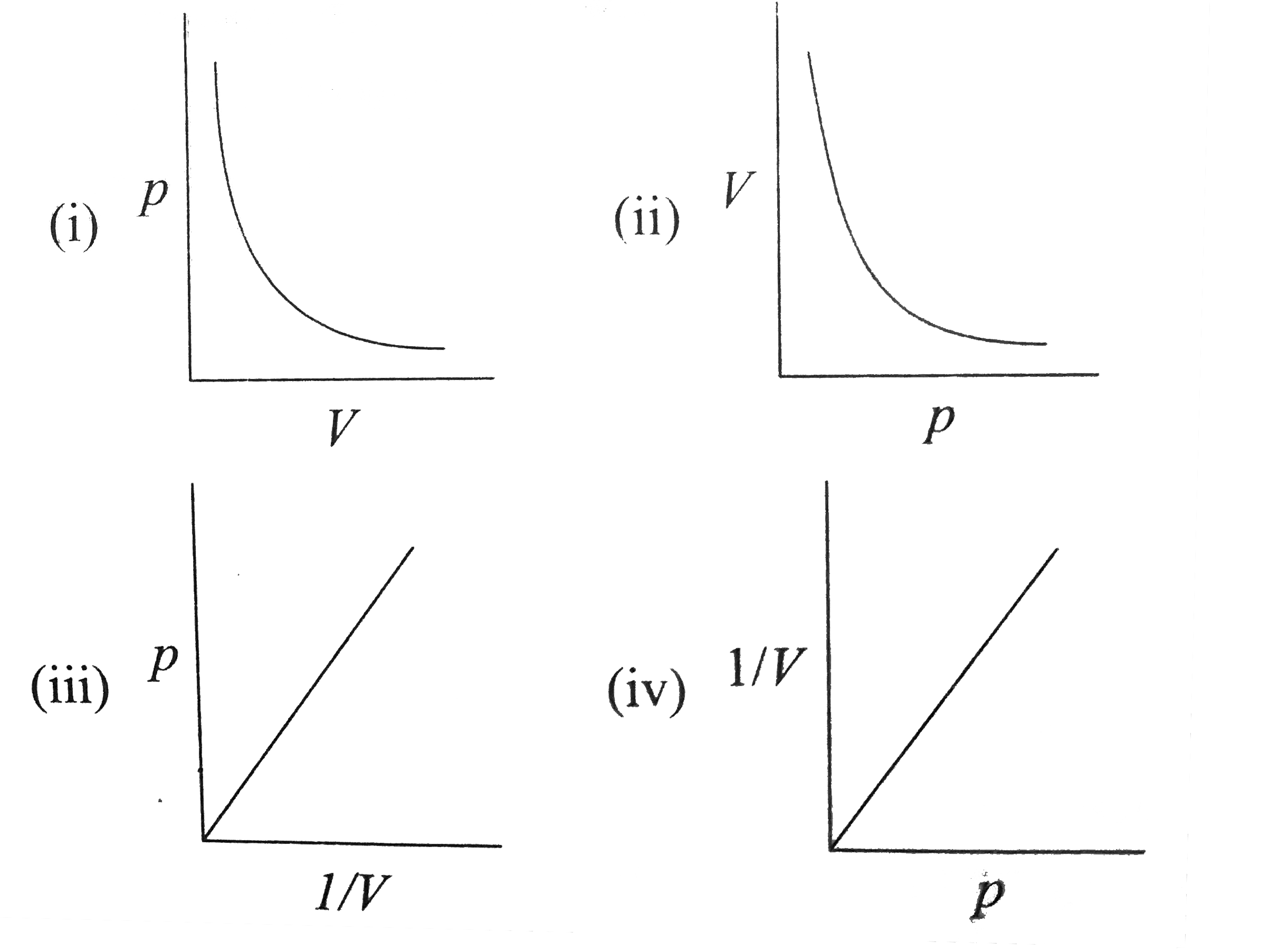
View SolutionWhich of the following graph represents Boyle's law ?
View SolutionWhich of the following curves represent(s) Boyle's law?
View Solution

